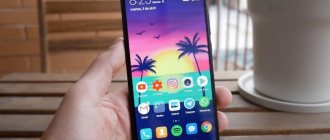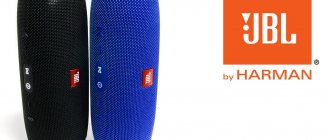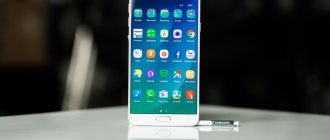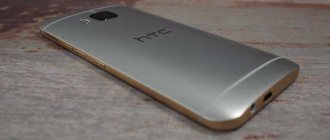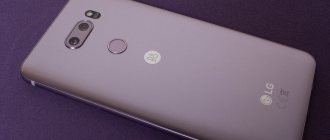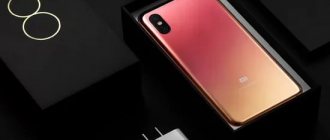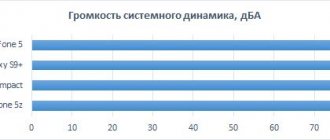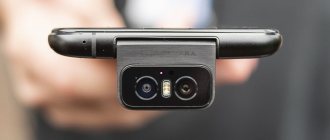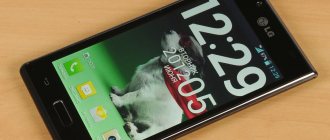Reward accrued
This material was written by a site visitor and was compensated for.
Realme brand smartphones were recently introduced to the Russian market - this happened in June 2020. However, there should be no suspicions about the low quality of the devices, since the BBK company, which is directly related to the new brand, has been producing mobile devices under names familiar to most users for several years - Vivo, Oppo and OnePlus. In this regard, it becomes interesting, what new does Realme have to offer? Let's try to figure this out.
Specifications
- Dimensions 156.8 × 74.2 × 8.3 mm
- Weight 175.5 g (officially 172 g)
- Qualcomm Snapdragon 710 processor, 2 cores 2.2 GHz Kryo 360 Gold and 6 cores 1.7 GHz Kryo 360 Silver.
- Video chip Adreno 616, 500 MHz
- Operating system Android 9 Pie with ColorOS 6 shell
- IPS display with a diagonal of 6.29″, resolution 2340×1080 (19.5:9)
- Screen dimensions: 145 × 67 mm. Frames on the sides ~ 2.5 mm, frame on the bottom ~ 5 mm, frame on the top ~ 2.5 mm.
- Random access memory (RAM) 6 GB, internal memory 128 GB
- microSD memory card
- Dual nano-SIM support
- GSM/WCDMA, LTE networks: 1, 3, 5, 7, 8, 20, 28, 38, 40, 41.
- Wi-Fi 802.11 a/b/g/n/n (2.4 GHz + 5 GHz)
- Bluetooth 5.0
- GPS, A-GPS, GLONASS, Beidou, QZSS, Galileo
- Micro-USB 2.0 connector, full USB-OTG
- Main camera 16 MP (f/1.7) and 5 MP (f/2.4), autofocus, flash, video 1080p (up to 60 fps) and 4K (30 fps)
- Front camera 25 MP (f/2.0), video 1080p (30 fps)
- Proximity and light sensors, accelerometer, magnetometer, gyroscope, fingerprint scanner, pedometer, ANT+.
- 4045 mAh battery, VOOC 3.0 charging.
announcements and advertising
2080 Super Gigabyte Gaming OC for 60 rubles.
Compeo.ru - the right comp store without any tricks
RTX 2060 becomes cheaper before the arrival of 3xxx
Ryzen 4000
series included in computers already in Citylink
The price of MSI RTX 2070 has collapsed after the announcement of RTX 3xxx
Core i9 10 series is half the price of the same 9 series
The price of memory has been halved in Regard - it’s more expensive everywhere
realme 3: equipment and display
realme 3 is equipped with a 6.22-inch IPS display with HD+ resolution (1520x720 pixels), has thin frames and is protected by Gorilla Glass 3. The film is glued to it directly from the factory, but if you wish, you can replace it with another one - with a good oleophobic coating , - which will not collect fingerprints. The display occupies 88.3% of the front panel area, offers sufficient brightness for comfortable readability in bright sunlight and good viewing angles. And the use of an IPS matrix becomes the key to natural color reproduction.
Unlike the Pro version, realme 3 offers a cheaper processor - an 8-core MediaTek Helio P60 (MT6771) with a frequency of up to 2000 MHz and a Mali-G72 MP3 graphics subsystem. The following combinations of RAM and internal memory are provided: 3/32 GB and 4/64 GB with a price tag of 10,990 rubles and 12,990 rubles, respectively. All this allows the smartphone to provide good performance and not slow down when running resource-intensive applications and mobile games: PUBG Mobile and Asphalt 9 are capable of delivering a stable 30 FPS.
Equipment
In addition to the smartphone, the thick cardboard box contained the following items:
- Power unit;
- USB – micro-USB cable;
- Silicone bumper;
- A paperclip for removing the card tray;
- Instructions.
It is worth noting that in my case, I found in the box a power supply that was not intended for European outlets. In addition, it does not support fast charging, but, of course, buyers from Russia will see a charger included in the package that is free of these shortcomings.
The cable on the contrary supports the VOOC 3.0 standard and is suitable for fast charging, and it also has a slightly non-standard connector, which still does not interfere with charging any smartphone with a micro-USB port through it.
The protective bumper fits tightly on the smartphone. Perhaps even too tightly, which is why it is not possible to put it on a smartphone on the first try. When the case is on, large edges form around the front of the smartphone, and the bumper material is quite thick and rigid, which can help protect the smartphone in case of falls. The bumper weighs 21.3 grams.
Appearance
Three colors. Blue, purple (both gradient) and dark gray. Gray ones are not officially brought to us. Theoretically, they can be found in Chinese stores. In practice, even there they are quite rare.
Plastic. Nice, neat, medium slippery. Neat - covered with fingerprints quite weakly.
Marketers say that the designers were inspired by the 24 Hours of Le Mans auto racing. But (in my opinion) they are delusional. No, no, Realme is really good, there are no complaints about the design. But to see something auto racing in it, you need to have a very rich imagination.
I was pleased with the cutout in the screen. A neat little drop. The complete lack of LED was disappointing.
Boring details
Above the screen is the already mentioned teardrop-shaped cutout. It has a front camera. In the vicinity of the camera there are light and proximity sensors.
As usual, there is nothing under the screen.
Back surface. The camera block (very elegant, by the way) is in the traditional upper left corner. It protrudes quite a bit, so the smartphone (if without a case) is fundamentally unstable. The fingerprint scanner is in its rightful place.
Top edge. Noise canceling microphone.
Bottom edge. 3.5 mm audio output, main microphone, Micro-USB connector, speaker.
On the right side there is a lone lock/power button.
For some reason the volume rocker was moved to the left side. There is also a tray with cards.
Appearance
The appearance of the smartphone is standard for modern devices with a drop-shaped cutout on the front. In the cutout there is a camera, just to the right of which there is a light sensor, and above the module there is a speaker. The proximity sensor is located slightly to the right of the speaker, and it is located separately from the light sensor, which is far from the most common case. The frames around the screen can be called thin. Unfortunately, there is no LED event indicator.
At the top end there is only a hole for a microphone.
On the bottom there is a 3.5 mm jack, another microphone, a micro-USB connector and holes for the speaker. Why they didn’t install the more convenient Type-C is a mystery. And it’s not just about faster cable connection, but also about various gadgets that are not always convenient to use due to the peculiarities of the connector’s location. For example, I cannot connect the Seek Thermal mobile thermal imager without adapters because the camera eye will look at me, and not in the opposite direction, as expected.
The left side contains volume buttons and a full-fledged tray for two nano SIM cards and a microSD memory card.
On the right side, only the power button is visible, and this arrangement of controls on the case also does not look standard. When the smartphone is in my right hand, it is most convenient for me to adjust the sound with my middle finger, which, by the way, does not cause any discomfort.
On the back side there is a fingerprint scanner slightly recessed into the body and a protruding block with two cameras and a flash. The block sticks out strongly - so much so that if you place the smartphone on any surface, pressing the screen will cause the device to wobble. The back surface of the Realme 3 Pro is very easily soiled - it is a glossy, slippery plastic that, although it looks beautiful, is only covered in fingerprints. Fortunately, the side edges are made of a different plastic, more practical in the sense that it no longer slips in your hands and fingerprints are not visible on it.
There were no complaints about the build quality.
Design
Realme X has an attractive look and a quality feel. White and blue color options are available, in this case white is considered. This color goes well with the chrome edges of the case. The device is quite thick with a thickness of 8.6 mm and it weighs 191 g.
There are two additional color versions in China, which will be distributed in other countries. There is also an edition called Spider-Man: Far From Home for fans of the corresponding comics and movies.
On the front there is a 6.53-inch screen with Full HD+ resolution. This is an OLED panel that is protected by Gorilla Glass 5. The bezels around the screen are quite narrow, apart from the bottom. There are no cutouts or holes at the top, nothing interferes with looking at the image. The edges of the screen are not curved. The device resembles the OnePlus 7 Pro, which can be considered a compliment.
The colors on the screen are rich and rich, and the brightness is high enough for outdoor viewing. A protector was installed on the screen, but you can do without it. The glass is strong enough not to be scratched.
Hidden inside the screen is an optical fingerprint scanner manufactured by Goodix. Recognition occurs quickly and you are logged into the system without delay. There are five animation options to choose from. There is also a face unlock that uses a pop-up camera.
The developers tested the retractable camera mechanism over 200 thousand opening and closing cycles. This means that it will definitely not break for several years, even if you use it dozens of times a day. The front camera sensor is covered with sapphire crystal, which increases its durability. There is also a safety mechanism; the camera automatically hides inside the case if the device falls.
The shiny back surface looks like glass, but it's polycarbonate. There are no scratches left here, and the stains are not too visible on the white background. The manufacturer's logo is located vertically in the center. Above it is a dual camera and LED flash. The power button and volume control are placed on different edges of the device.
At the bottom there is a headphone jack, a USB-C port, and a single speaker. Finally, this manufacturer abandoned the outdated micro-USB interface. The SIM card compartment is on the side, you can put two nano cards here. Realme X is the company's first smartphone without memory card support. However, the built-in storage capacity of 128 GB should be enough for most users.
In the package you will find a plastic case for the smartphone, a USB-C cable, a VOOC 3.0 fast charging adapter, a SIM card removal tool and various papers.
Display
The viewing angles of the screen are good, except that when you deviate your gaze, the brightness decreases, as in any other IPS screen. Given the high FullHD+ resolution, there are no visible pixels to worry about. The stated diagonal is 6.3 inches, but in fact, taking into account the rounded edges, the real diagonal is slightly lower - approximately 6.14". This discrepancy is probably typical for all smartphones with similar displays. Initially, a protective film without an oleophobic coating is glued to the screen, but the oleophobic coating may also appear under the film.
The subpixel structure is standard for an IPS matrix.
The maximum brightness when displaying a picture with white color on the full screen is 512.7 nits, which is a good indicator. The backlight uniformity is average - 86%, but visible highlights on the display could not be detected with the naked eye.
The anti-glare properties of the device are excellent, as can be seen below in the photograph with two captured smartphones, the switched off screens of which reflect a white background. It is the darkest screen combined with sufficient brightness that has a positive effect on the perception of information under strong external illumination (for example, in bright sun).
The minimum brightness is comfortable for viewing information from the display in complete darkness - its indicator is 2.06 nits, and the automatic brightness adjustment works adequately, however, always setting a certain brightness level, regardless of what percentage the user has set it to. The maximum black brightness is relatively low (0.303 nits), so the contrast level is high, as for an IPS screen - 1692:1.
The color gamut of the smartphone is wider than the standard sRGB triangle, so the colors on the display will be more saturated than they should be. The color temperature is initially slightly too high - because of this, the blue component will predominate, which, fortunately, can be corrected using standard smartphone tools.
In the display settings there is a slider that allows you to fine-tune the color temperature, and if you set approximately the values shown in the screenshot below, you can get a temperature close to the ideal 6500K.
The color gamut cannot be changed, and the only side effect of setting a warmer color temperature is a slight decrease in maximum brightness - about 20 nits from what I got with standard settings.
Modulation of the display backlight was detected at a frequency of approximately 2300-2400 Hertz at 5% brightness and lower. The modulation amplitude is small, and the frequency is too high to create any discomfort for the eyes. Of course, there is also no visible screen flicker.
The ghosting of reflections when the display is turned off is weak, indicating that there is no air gap between the layers of the screen. Multi-touch supports up to 10 simultaneous touches, and the touch's responsiveness is good.
As a result, there are no serious complaints about the display, except for the expanded color gamut, which is unlikely to be a minus for most users. Most likely, someone will no longer like the notch and rounded edges, due to which some information is lost on the screen.
Realme C3 design
Let's start with the design. The Realme C3 has moved away from the C2's diamond pattern and instead adopted a sunray pattern at the back - if you look at the back panel under the light, it will give a sunburst-like effect. The stripes start next to the rear cameras and widen towards the right edge, giving two shades of red/blue at the rear.
And while the rear casing may look glossy due to this effect, it actually has a textured texture and feels durable enough to prevent scratches that the smartphone might get. The camera module protrudes from the rear panel, but the ring around it is slightly raised to protect the protective glass from scratches.
On the front, like any modern smartphone, the Realme C3's panel is dominated by a 6.5-inch LCD display. This means there are thin bezels above the display and on the sides. This is a design that we see in many Android smartphones, especially budget and affordable ones, and Realme really isn't going to upset buyers in this regard. The screen is protected by Gorilla Glass 3—while it's not Corning's latest version of tempered glass, it's the best you can find in this price range.
Hardware, operating system and software
The hardware used in the smartphone may not be flagship, but is as close as possible to it. The Snapdragon 710 processor, which has become the heart of Realme 3 Pro, provides good performance and supports many modern features and standards. The results of synthetic tests indicate this, and I will also note the absence of significant throttling under load.
But not everyone will like the proprietary ColorOS 6.0 shell due to the fact that it is very different from the standard Android OS. There are many functions in the firmware, but it’s easy to get lost in them, and also, for example, when connecting gadgets via USB-OTG, you need to activate the corresponding item in the menu. After a short period of time, OTG automatically turns off if not in use. The debugging mode in the developer menu is also automatically disabled, which in the future will lead to unnecessary actions on the part of the user, and these are not the only examples. I also found third-party pre-installed applications in the smartphone such as Lazada, Opera, ORoaming, Webnovel, App Market and various selections of software. Unfortunately, not everything can be deleted using standard operating system tools.
There are no complaints about the operation of USB-OTG itself - everything is connected, including demanding hard drives. Finger unlocking works accurately and quickly, just like face unlocking.
Realme smartwatch
Realme smartwatches are designed for those who are not ready to spend a lot of money on a smartwatch. The brand, owned by the Chinese technology giant Oppo, is trying its best to prove that cheap does not mean bad. We'll find out later whether the manufacturer succeeded.
The budget smartwatch only works with smartphones running the Android operating system and has most of the features you'd expect from a smartwatch, including viewing notifications and controlling music. There is also a built-in SpO2 sensor, which promises ample opportunities for fitness. At around $50, it's significantly cheaper than the Apple Watch Series 3 or Samsung Galaxy Watch.
Design and screen
Beautiful smart watch for $50? Seems Yes. Although the body is made of inexpensive plastic, they do not look bad. Square shape, with curved edges, black. At the same time, the glossy case creates the feeling of a more expensive watch than it actually is.
You can wear them almost around the clock. Practically, because the IP68 moisture protection level allows you to wash your hands without removing them, but you shouldn’t go, for example, into the shower with a gadget.
The strap is replaceable, 20 mm, and its thickness is 11.8 mm. Made of hypoallergenic silicone with a classic watch clasp. The strap is long enough to fit different wrist sizes.
The company also offers fashionable straps in red, green and blue colors. These straps have a single button clasp. Such a mount may raise questions regarding reliability, but no questions arose regarding it during testing.
There is only one physical button on the body of the gadget, which activates and turns off the screen, and holding the button allows you to select restart options.
For all main interaction scenarios, it is proposed to use a touch display. Which, unfortunately, is not ideal: 1.4 inches, color, touch. The resolution is 320x320 pixels and it is covered with protective glass Gorilla Glass 3. The size of the display does not allow it to completely fill the space of the case, so there is a small dark frame around it. This is more noticeable when the screen is off. It's a shame that the frame takes up so much space.
The screen quality is good and is sufficient for most tasks. Colors are a little muted, but overall visibility is decent. And on the street, in bright light, visibility greatly depends on the brightness level. At maximum brightness, everything is clearly visible even in bright sunlight.
The always-on display (AOD) function, which is already familiar in many gadgets from other manufacturers, is missing, although the response to the hand-raising gesture is prompt. Even during training.
And now the fly in the ointment: the sensor’s response to pressing. The delay in moving across the screen is very noticeable and sometimes even makes you nervous when trying to select the desired function.
Overall, the impressions are very worthy, considering the cost of the gadget. Despite some frankly budget decisions.
Specifications:
- Compatibility: Android;
- Display: 1.4 inches;
- Resolution: 320x320;
- Built-in optical heart rate monitor: yes;
- SpO2 sensor: yes;
- GPS: uses a connected smartphone (Connected GPS);
- View notifications: yes;
- Autonomy: 7-9 days.
Smart features
Smart watches run on a proprietary operating system, and it is not surprising that such a solution offers only basic functionality.
Let us repeat that smart watches only work with Android phones. So the army of fans of Apple devices will be forced to look towards other wearable devices.
The Realme Link application is responsible for synchronization from smartphones. You can download it from the Play Market. After synchronization, understanding the application will not be difficult. The user can choose from 12 interchangeable watch faces, six of which can be stored on the device. Dials are presented both classic and digital. A good choice that won't take up much time.
— Read more: THE BEST SMART WATCHES FOR ANDROID OWNERS. WEAR OS AND ALTERNATIVE |
Along with watch faces, you can receive notifications about incoming calls and various applications. The user will need to activate the applications from which he wants to receive notifications. In terms of notifications, you cannot view photos, but you can dismiss notifications. There were no questions about the stability of the system.
There were no difficulties with the gadget working as a remote shutter button for a smartphone camera. And, unlike some watches from other manufacturers, there were no problems updating weather data (when the phone was nearby, of course).
Controlling your smartphone's music allows you to scroll through tracks, adjust the volume, and also display the name of the current song.
The developer promises to later add control of a branded smart home, including lamps and air purifiers. So we are waiting for updates.
Physical activity monitoring
It seems that the developer focused on recording activity when creating a smart watch. The new product tracks steps and automatically tracks sleep. At the same time, the gadget is capable of more than you expect from it.
The user has access to notifications about low activity, the ability to set water consumption reminders, and constant heart rate monitoring. In this case, you can select the intensity of pulse measurement (every five minutes and up to 30 minutes).
Pedometer comparison: Realme Watch (left) and Garmin fitness tracker (right)
In terms of tracking accuracy, we were also pleasantly surprised. Comparing it with Garmin, the difference in step counting is not critical. We pay attention not to the absolute coincidence of the results, but to the consistency of the calculations. This is more correct in our opinion, since the method of processing the received information differs for each manufacturer. And the new smart watches cope well with this task.
The new product offers a large set of metrics for sleep tracking, available on more expensive models. The algorithm takes into account deep, light and REM sleep. At the same time, the heart rate is also recorded (if the continuous measurement function is active).
Sleep monitoring comparison: Realme (left and center) and Withings Sleep Analyzer (right)
If we compare the correspondence of sleep phases, then, as a rule, there is less time in light sleep and more time in deep sleep. Comparison was made with Withings Sleep Analyzer. The REM indicators (the sleep phase that affects brain development and the performance of the central nervous system) were approximately the same, the difference in readings was about 20 minutes. In general, sleep monitoring is a well-established process, although the data set in some devices from other manufacturers is wider.
SpO2 comparison: Realme (left) and iHealth (Xiaomi) pulse oximeter (right)
The presence of SpO2 on such a budget gadget was a surprise. It is used as an additional way to assess a user's fitness level, and is available on Huawei and Garmin models.
You can take spot measurements, which, unlike Huawei, are saved and displayed in the Realme Link app. You can see the range of values, average value and number of measurements. We compared the sensor data with a pulse oximeter, the indicators turned out to be similar. It would be nice to see how the received information can be interpreted and how it can be useful to the user. However, this is not yet the case.
There is another interesting and popular metric - mental or mental well-being. In fact, these are guided breathing exercises.
For a budget fitness tracker, the model has serious functionality inherent in higher-end smartwatches and, at the same time, the accuracy is quite high. And they work stably, without failures.
Sports and heart rate monitoring
The developer devotes a lot of time to sports, despite the fact that outwardly the new product looks more like a smart watch than a sports watch. The gadget can track 14 sports, including running, cycling, yoga, football, basketball and cricket.
However, some, like cricket, only include data on duration, heart rate and calorie consumption. There are more metrics for cycling, running in open space and on a treadmill. For running, you can see your pace, distance and cadence.
Jogging. Test: Realme (left) and Garmin Fenix 6 (right)
The gadget does not have built-in GPS, but you can use a connected smartphone (Connected GPS), similar to the new Polar Unite.
However, even with GPS connected, the testing data was not accurate. Accuracy varies within 800 (!) meters compared to Garmin. And the pace indicators are far from the actual values. On the treadmill, given that the running route is disabled, the rhythm and pace are also far from the Garmin gadgets with which the comparison was made.
The device has automatic recognition of the start of running and walking, but we were unable to get it to work.
As for the optical heart rate monitor, its accuracy exceeded our expectations and was largely on par with most optical sensors. Realme Heart Rate Monitor is suitable for measuring resting heart rate and general exercise. As expected, difficulty arises during high-intensity training.
Heart rate monitor comparison: Realme (left and center) and Polar H9 (right)
At the same time, even at a high pace, the standard heart rate monitor is not too far behind the Polar H9 chest strap and matches your heart rate. The difference was only 2 beats per minute at maximum values. As the frequency increases, the lag of the optical sensor is traditionally greater.
Unfortunately, the device does not display a heart rate graph. Instead, it displays the time spent in each heart rate zone and suggests an average for the session.
— Read more: AMAZFIT BIP S. FIRST LOOK |
Another surprise was the VO2Max algorithm, which requires a 12-minute run to generate a reading. Moreover, the metric completely depends on the reliability and accuracy of information about heart rate, which, as we said above, is quite good and generally corresponds to reality. Unfortunately, there is no option to connect a chest heart rate monitor.
At the end of the workout, the results can be viewed in the company’s proprietary application. Among the possibilities of synchronization with third-party services, only Google Fit is provided (we hope for now). The exercise log is simple and will not allow you to go deeper into the analysis of statistics. Only the total duration of training, sessions and average training time are available.
The sports component of the gadget is not unique and there is definitely room for improvement in terms of functionality. However, most of it can be done programmatically, which allows us to hope for improvements through software updates.
Autonomy
Power is provided by a 165 mAh battery, which, according to the developer, should provide 7-9 days of operation on a single charge. More precisely, 7 days with the heart rate monitor turned on and 9 days without it. Based on our testing, these numbers turned out to be a little high.
When tested, the gadget's charge lasted for about 4 days with active heart rate monitoring and tracking a couple of workouts. At the same time, recording activities did not greatly affect autonomy (lack of GPS), although running the screen at full brightness makes itself felt.
You can get closer to the indicators declared by the developer in 7-9 days by turning off heart rate measurement and lowering the brightness.
But there is also an energy saving mode, which should provide up to 20 days of operation. True, in this mode, the gadget only displays the time and battery status. By holding the physical button, you can return to normal smart mode. And it's very convenient.
It takes more than an hour of charging before the battery is fully charged. The charger is made in the form of a round stand that is attached to the back of the device. A convenient and already proven solution.
RESULT
In our opinion, Realme smartwatches are suitable for recording daily activity on a modest budget. Activity monitoring is generally good. Better than sports tracking. Smart functions have a basic set, which will be enough for many. At the same time, the gadget has very few competitors in terms of price. Even the popular Amazfit Bip costs a little more. Thus, the company has a good budget fitness tracker in the format of a smartwatch.
What I liked:
- Lots of functionality for little money;
- Easy to use;
- Good monitoring of daily activity;
- Decent battery life
What I didn't like:
- Low quality display;
- No built-in GPS;
- Sports tracking leaves a lot to be desired;
- Possibility of synchronization only with Android smartphones.
— Read more: OPPO WATCH VS MI WATCH AND REALME WATCH. WHAT IS THE DIFFERENCE? |
Source: wear-gadget
_________________
- join us on Facebook
— Our channel in Telegram
- we are on Instagram
Connection
Dual-band Wi-Fi picks up the signal well in conditions where the smartphone is separated from the router by two walls. Both SIM cards can simultaneously operate in 4G networks, and the list of supported bands includes 10 frequencies, including band 20, which is relevant for Russia.
The vibration level is average, but I really liked the earpiece. It is very loud, and there is confidence that the interlocutor will be heard at the maximum volume level even in noisy places. The sound from the main speaker is loud, but the sound quality does not allow using the smartphone as a portable speaker.
Realme C3 detailed smartphone review
Realme C3 was launched as the third generation model in the budget-oriented smartphone category of the company's lineup. This is the first of a series of entry-level models that we may see in 2020. Realme's very lively UI offers some intrigue to the smartphone, as does the all-new MediaTek Helio G70 processor and large 5,000mAh battery.
The Realme C3 is a good model considering today's entry-level smartphones - it has a large display, a big battery and a low enough price to keep the device among a large number of smartphone buyers.
Cameras
The smartphone has a dual main camera, the additional module of which is used as a depth of field sensor. Decent pictures can be taken both in good lighting and in the dark, or, for example, indoors (despite the lack of optical stabilization). In the standard camera settings there is an “Expert” mode that helps you manually adjust focus, white balance and exposure. There is a separate button on the viewfinder screen, when pressed it doubles the zoom, but this function suffers from the quality of the image. I will also note the presence of artificial intelligence, which tries to correctly determine the scene and the ability to apply HDR mode to the image.
No magnification | Magnification 2X |
Video is recorded with a maximum resolution of 4K and mp4 extension. The number of frames available for selection when shooting with FullHD resolution is 30 or 60.
Pictures taken with the front 25 MP camera are presented below. The display backlight is used as a flash. As with the main camera, automatic HDR mode is available.
Realme 6 review: cameras
The main camera of the rear photo module with flash is based on the Samsung ISOCELL Bright GW1 (S5KGW1) sensor, complemented by a 6-element high-aperture lens (aperture f/1.8, phase detection autofocus, viewing angle 78.6 degrees), and the optical size of the 64-megapixel sensor reaches 1/1.72 inch. A quad Bayer color filter using Tetracell technology can combine 0.8-μm photodiodes of the same color into groups of four (2x2), forming 1.6-μm pixels and a 16-megapixel image. This mode is used by default on the camera. An auxiliary (DoF) camera helps in blurring the background in portrait mode, which is therefore also called “portrait”, which is based on a monochrome 2-megapixel sensor (optical size 1/5 inch, pixel 1.75 microns) and a 3-lens lens ( aperture f/2.4, EGF 22 mm, viewing angle 88.8 degrees) with fixed focus. A camera with the same parameters, but in color, was reserved for macro photography with a focusing distance of 4-10 cm.
To shoot general plans, we chose a camera with an 8-megapixel sensor (optical size 1/4 inch, pixel 1.12 microns) and a 5-element ultra-wide-angle lens (aperture f/2.3, EGF 13 mm, viewing angle 119 degrees, fixed focus). According to unofficial information, all lenses of the rear photo module are made of glass.
The front camera, which was in the upper left corner of the screen, had a 16-megapixel sensor, possibly a Samsung S5K3P9 (optical size 1/3.1 inch, pixel 1.0 microns) and a wide-angle 5-lens lens (f/2.0 aperture, viewing angle 79.3 degrees, EGF 26 mm, fixed focus). But the lenses here are plastic.
In the interface of the Camera application, the lower part of the viewfinder is reserved for selecting one of three main modes, replaced by horizontal swipes. Icons at the top of the screen allow you to decide on the flash, HDR mode, color saturation, filters, and also go to settings. There you can, for example, select the aspect ratio of the frame (frame), and also enable scene recognition using AI functions. The brightness of the image is changed by vertical swipes (down or up) next to the focus circle. In addition to discrete zooming with factors of 0.6X (ultra-wide-angle mode), 1X, 2X and 5X, and for the “Video” and “Photo” modes, smooth digital zoom of the image is available up to 10 times. When shooting portraits, it is suggested to apply filters and emulate the aperture size. For the front camera, which has its own HDR mode, in addition to effects, AI beauty tools with smooth adjustment are provided. Tapping on the “More” icon gives access to additional modes, including Ultra Macro, “Expert” (PRO), “Panorama”, etc. Thus, the PRO mode offers manual adjustment of ISO, shutter speed, white balance, focus and exposure compensation levels.
Special image processing and optimization algorithms reduce noise and increase detail in photos in Night mode, available for both front and rear cameras.
Both photo modules can record video in FHD [email protected] fps resolution. However, the rear quad camera for FHD has the ability to increase the frame rate to 60 fps, and improve the quality to 4K UHD [email protected] fps.
Videos can also be recorded in ultra-wide-angle mode. Compression compatibility is provided by the standard H.264/AVC codec, and better efficiency (reducing file size) is provided by H.265/HEVC, with the desired one selected in the settings. Content is saved in MP4 container files (HEVC/AVC - video, AAC - audio).
The manufacturer promises that UIS video stabilization (at best for [email protected] fps) in the next system update will be complemented by UIS Max, when image smoothness is ensured even with intense movement and in wide-angle mode.
During test shooting on Realme 6, the main load fell on the main 64-megapixel camera. The significance of the contribution of the auxiliary camera is difficult to assess, although it certainly was there. The richness of the image in the photo is directly related to the inclusion of the “Color Saturation” option. An ultra-wide-angle lens can only be relied upon in good light. But in most cases it’s quite easy to get by without a macro camera, and even with a fixed focus. Examples of pictures from the rear photo module can be viewed here.
Navigation
The smartphone sees all known types of satellites, but the time required for a cold start using only satellites could not be detected. The fact is that the smartphone initially requires you to launch all additional services for more accurate navigation, and only then gives you the opportunity to disable them, which greatly affects the test results. GPS tracks are smooth, and the device also has a compass. In general, no problems were identified when navigating in urban environments.
Working hours
From the power supply that I found in the box, the smartphone charges at a maximum of approximately 5.16 Volts and 1.83 Amps, which gives a total power of 9.44 W. Thus, if you charge your smartphone with a power supply that produces a voltage of 5 V and a current of 2 A, the charging time will be 2 hours 33 minutes. For other users, a full charge takes about 1 hour and 20 minutes, but they probably got another charger that actually supports VOOC 3.0 fast charging.
Battery life tests at a screen brightness of 150 nits gave good results, allowing us to hope that the smartphone will have enough charge for at least one day with moderate use.
- Navigation in Osmand+ (on the window) - 11 hours 55 minutes.
- 24 hours in standby mode - 8 percent of the charge was spent.
- PUBG game (high graphics settings) - about 6 hours 40 minutes.
- HD video in MX player - 12 hours 40 minutes.
- GeekBench 4 test at minimum brightness - 11 hours 43 minutes.
- PC Mark with a recommended display brightness of 200 cd/m² - 11 hours 56 minutes.
Heat
During the throttling test, according to the pyrometer data, the smartphone heats up to 51°C at a room temperature of 22.3°C, which is quite a lot. The back surface of the smartphone feels warm, but not hot.
Games, audio, video and more
There are no problems with games, the only thing is that it is not always possible to set the graphics level to maximum. But there are no frame drops, and more detailed testing results can be found below.
- PUBG Mobile – 30 FPS (graphics “high”, frame rate “high”).
- Fortnite - 29-30 FPS (medium graphics settings).
- WoT - average 60 FPS (maximum settings).
Antutu Video Tester shows that not all video formats are supported by the hardware decoder.
FM radio only works with connected headphones.
Results
The Realme 3 Pro smartphone reminded me of some devices released under the Vivo brand (unfortunately, it was not possible to test Oppo and OnePlus devices). The hero of the review also lacks NFC and a more modern Type-C connector, but there is a strange shell, albeit with more functionality. Even the silicone bumper reminds me as much as possible of the one I saw bundled with the Vivo Y93 Lite smartphone, and this is not surprising, because both Vivo and Realme have common roots. Similar features with the plus sign were also noticed, such as a loud speaker. But I was unable to identify any significant differences between the products of the two mentioned brands.
If the above shortcomings and features do not confuse you, and if the slippery glossy body of the smartphone does not confuse you, then I see Realme 3 Pro as an excellent option for purchase - primarily due to its good cameras, high-quality display and good performance.

